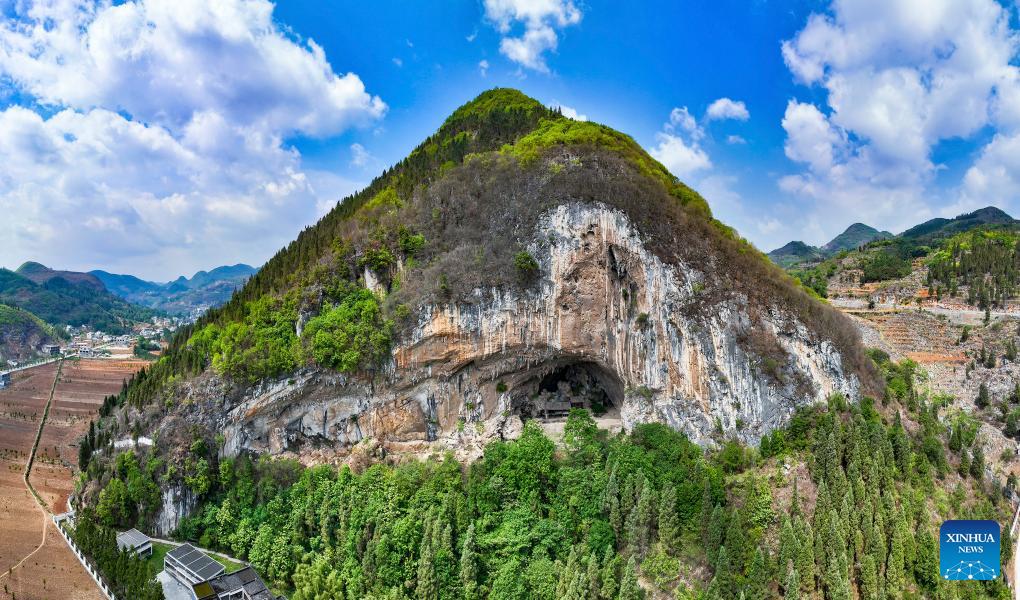
 0 Comment(s)
0 Comment(s) Print
Print E-mail Xinhua, March 20, 2024
E-mail Xinhua, March 20, 2024

This file photo shows a limestone cave in Puding County, southwest China's Guizhou Province. (Guizhou Provincial Museum/Handout via Xinhua)
Prehistoric cave ruins excavated in southwest China's Guizhou Province, featuring air ventilation structures, separated bedroom and living room areas, and a combined function of residence and cemetery, vividly demonstrate the life and wisdom of humans dwelling in caves tens of thousands of years ago.
An exhibition that opened recently in the Guizhou Provincial Museum showcases cave-dwelling culture based on the archaeological findings of different prehistoric cave sites in the province.
The exhibition has included a scene replicating the Zhaoguodong cave ruins in Gui'an New Area, allowing visitors to find a cave nestled on a slope beside a river.
"Like modern people who prefer locating their houses near a mountain and a river, hominids chose dry caves near water sources as their residence," said Zhang Xinglong, deputy head of the provincial cultural heritage and archaeology research institute.
The cave site was both a residential area and a cemetery, where skeletons with curled limbs were found, said Cai Sifu, deputy director of the natural resources department of the museum.
"The skeletons' positions resemble a fetal posture, which indicates that hominids considered death as a return to the womb," Cai said.
Cai added that ancient humans would select a sign to mark the cave they lived in, such as a tree and rocks with peculiar colors.
"The signs are like house numbers in modern times," said Cai, adding that a giant cave site in Panxian County, where yellow-white rock signs were found at the entrance, was a case in point.
In Puding County, a limestone cave was chosen as the residence of humans in the Paleolithic Age.
According to Cai, the south-north cave with an entrance at each end has ensured air ventilation.
Compared with the northern end, archaeologists have found more relics near the southern end, indicating that ancient humans preferred spending time in the sun-drenched southern part.
In some caves, the area with more sunshine was also an important zone for processing stoneware, as evidenced by the abundance of stone items found there.
Cai explained that the well-lit area was ideal for stoneware processing, and its distance from the resting area minimized disturbance to sleeping individuals due to the noise generated.
"Kitchen" areas were also found in many caves, where burnt soil and many scattered animal bones were excavated, according to Zhang.
With its widespread karst landforms, Guizhou boasts over 5,000 identified caves. Among them, more than 500 cave sites have been confirmed as prehistoric ruins covering the middle and upper Paleolithic Age and the Neolithic Age.
Some of the cave ruins, such as Zhaoguodong and the cave site in Panxian County, were successively featured in the annual list of China's top 10 archaeological discoveries.

This file photo shows a giant cave site in Panxian County, southwest China's Guizhou Province. (Guizhou Provincial Museum/Handout via Xinhua)
Go to Forum >>0 Comment(s)